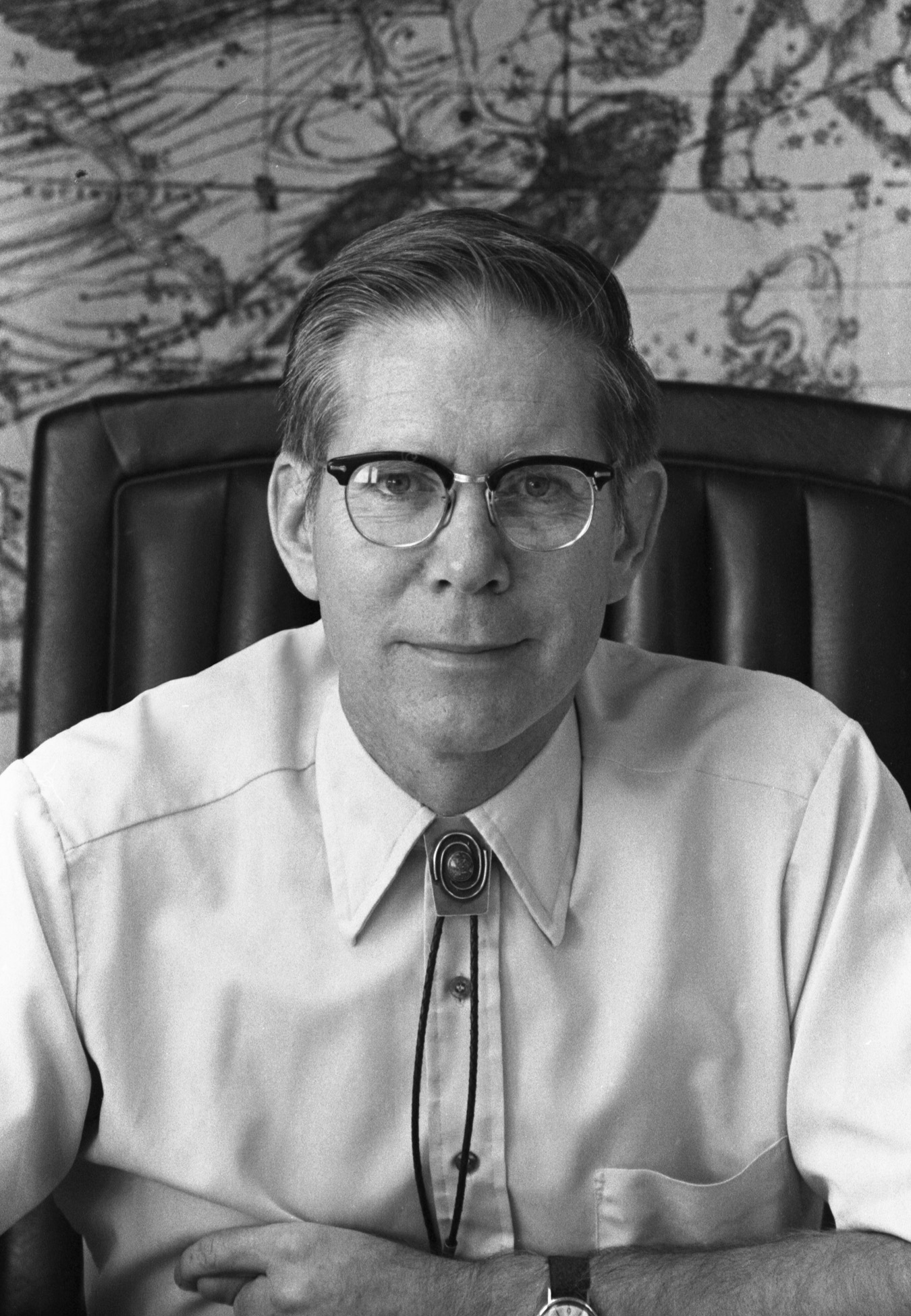Harlan J. Smith Telescope
 The Harlan J. Smith Telescope
The early 1960s saw the emergence of the Space Age, and NASA needed large new telescopes to survey the planets before spacecraft could be dispatched to study them in detail. McDonald Observatory's new director, Harlan J. Smith, saw an opportunity. He convinced NASA to build one of those new telescopes at McDonald. The telescope brought new life and prestige to the observatory, helped recruit top young faculty members, and established McDonald as key player in the exploration of the solar system.
The Harlan J. Smith Telescope
The early 1960s saw the emergence of the Space Age, and NASA needed large new telescopes to survey the planets before spacecraft could be dispatched to study them in detail. McDonald Observatory's new director, Harlan J. Smith, saw an opportunity. He convinced NASA to build one of those new telescopes at McDonald. The telescope brought new life and prestige to the observatory, helped recruit top young faculty members, and established McDonald as key player in the exploration of the solar system.
Planning began in 1964, and construction was completed in 1968 on Mount Locke. Built by Westinghouse for about $5 million, the new telescope was then the third largest in the world. Weighing in at 160 tons, it had a fused silica mirror 107 inches (2.7 m) wide that gave it a light-gathering power one-quarter million times greater than the unaided eye. It began regular observations in 1969.
The telescope's planetary studies played a significant role in preparing for more detailed exploration of the solar system by spacecraft and in understanding the results of those missions.
For almost a decade, the telescope also reflected a laser off mirrors left on the Moon by Apollo astronauts, in a program called “lunar laser ranging.” These results have helped refine the distance to the Moon and enabled a better understanding of its interior, and provided a test of Albert Einstein's theory of General Relativity. That program has since moved to a dedicated laser ranging telescope on neighboring Mount Fowlkes.
Today, many different instruments can be fitted onto the Smith Telescope, enabling many different types of astronomical observations. The telescope has been extensively used to study the compositions of stars, the motions of galaxies, and to search for planets around other stars in our galaxy. It continues to be used every clear night of the year.
 Harlan J. Smith
In 1995, the 107-inch telescope was re-named to honor Harlan J. Smith (1924-1991), who served as director of McDonald Observatory from 1963 to 1989. He was the first University of Texas director, after a partnership with the University of Chicago’s Yerkes Observatory ended. He started The University of Texas’ astronomy department in Austin, now one of the top 10 university astronomy programs in the United States.
Harlan J. Smith
In 1995, the 107-inch telescope was re-named to honor Harlan J. Smith (1924-1991), who served as director of McDonald Observatory from 1963 to 1989. He was the first University of Texas director, after a partnership with the University of Chicago’s Yerkes Observatory ended. He started The University of Texas’ astronomy department in Austin, now one of the top 10 university astronomy programs in the United States.
Telescope Facts |
|---|
Primary Mirror |
Diameter: 2.72 meters (107 in.) Weight: 3540 kg (7800 lbs.) Thickness: 31.8 cm (12.5 in.) Material: Fused silica |
Telescope Tube |
Diameter: 3.66 meters (12 ft.) Length: 9.75 meters (32 ft.) |
Telescope weight |
160 tons |
Dome |
Diameter: 23 meters (76 ft) Weight: ~ 200,000 kg (220 tons US) |
Design |
Design: Charles Jones, Inc. Construction started: April 1966 Construction completed: October 1968 Telescope contractor: Westinghouse Optics: Davidson Optronics Dome: D.H. Lovell Construction Co. |


